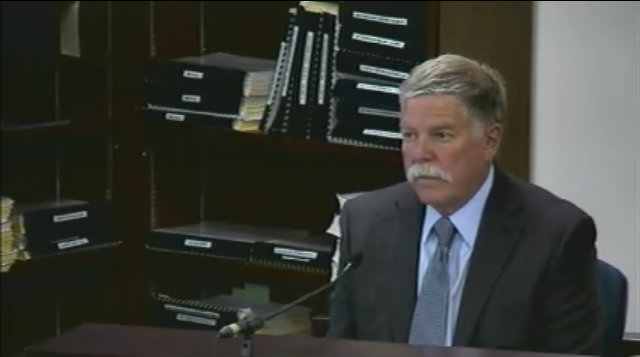
A communication breakdown at an Ontario engineering firm contributed to flaws in an inspection that failed to detect weaknesses in a mall roof before it collapsed.
The engineer who wrote a report based on a visual inspection, stating that the mall roof was sound in May only weeks before the roof slab collapsed last June 23, killing two women inside, also had a suspended license at the time of the inspection, according to testimony June 6 and 7 at the commission of inquiry conducted by the Ontario government in Elliot Lake.
He was the president of the engineering firm, but he had recently lost his license. And he was unaware that his own firm had had inspected problems with leaks at the same structure years earlier.
Another engineer at the firm signed off on the report. Neither the inspecting engineer nor the reviewing engineer who signed off on the report were aware of long-term water intrusion problems at the mall or that their own firm had written a report in 2005 that covered the leaking roof troubles.
The testimony provided the most detailed information yet on the events leading up to the tragedy. The witnesses also provided a more nuanced picture of the 30-person engineering firm, M.R. Wright & Associates, Inc., Sault St. Marie, and its former principal owner and president, Robert Wood.
During his testimony, Wood said he was sorry for the people who had lost their lives and what that had done to their families. He noted that his life was affected, too, and that he had retired because of the tragedy.
Once a prominent structural designer, Wood had lost his license. He personally performed the inspection of the Algo Centre Mall in Elliot Lake--a job that may have also been done by a young, less-experienced engineering graduate.
Wood had practiced engineering for 38 years and designed many building structures in northern Ontario over the course of his career, according to Gregory Saunders, M.R. Wright's former engineering manager and firm minority partner. Saunders had signed off on Wood’s visual inspection report on the mall roof. The roof also served as a parking deck.
The mall’s steel structure had had rusting, too, but no one had considered it significant at the time or was alarmed by what appeared to be surface rust only.
Ontario's labor ministry announced on April 22 that it had charged Robert Wood with two counts of violating the province’s worker safety laws. He faces fines and imprisonment.
The commission inquiry is an unusually thorough process that since March has had about 60 days of proceedings. But the two most culpaple parties in the tragedy had not yet testified until June 6 and 7.
Saunders' testimony portrayed Wood as a once-prominent building structural designer nearing the end of his active career but still the majority owner of the firm (the company has since been sold).
In the recent past, Wood had designed a small bridge that failed to meet code and had had his license suspended for the oversight. After arguing initially that the bridge didn’t need to meet code because it was on private land, Wood eventually agreed to the suspension and decided not to take required exams to regain his license, according to Saunders' testimony.
Deleting Report Content
Some of the testimony made it seem as if Wood had compromised with the mall’s owner, Robert Nazarian, who needed the inspection for new mortgage financing for the mall.
At Nazarian’s request, Wood removed a photo from the report of a “leak collection system,” a series of tarps collecting water running off from the rooftop deck into the Zellers store in the mall. He also removed a photo of a rusting girder and altered the phrase “ongoing leakage” by removing the word “ongoing.”
Under questioning by the inquiry commission’s chief attorney, Bruce Carr-Harris, Wood admitted he hadn’t had experience in dealing with corrosion in a mall like the type he encountered in the Elliot Lake mall.
His previous experience with corrosion was in an industrial setting. Because he wasn’t expecting to see corrosion on the steel structure of the mall, he wasn’t looking for it as diligently.
“I was obviously looking for areas that I was told there had been leaking. But it wasn’t something that I expected to have been going on for an extended period of time.”
Beginning in 2005, Wood’s firm did some mold studies on the mall, noting the rusting steel structure at the time. The report, however, was not reviewed when Woods inspected the property in May of last year.



Post a comment to this article
Report Abusive Comment